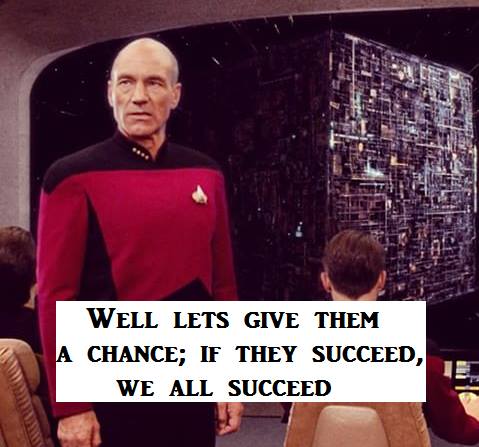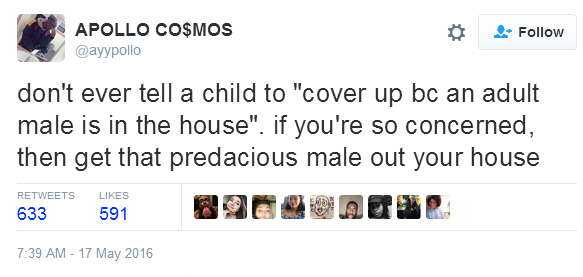Drafting and sewing are technical skills. Seamstresses are engineers of fabrics. Seamstresses can turn 2D shapes into 3D objects and vice versa and can visualize this. The other day I watched Christine draft our Sailor Scout skirts on paper and translate it to a draft in fabric in one shot, and while it took her an hour or two, it was all math and angles and technical skills that you just cannot figure out without a good foundation in math (or at least some serious prodigious visualization skills.) Anyone can modify an existing pattern, but when you’re making these weird-crazy anime-video-game-whatever designs, you’re sometimes making things that were not designed with real life production in mind. That’s mind boggling to me!
Most seamstresses are women. Women who were told growing up that boys are naturally better at math than girls. It’s a hugely loaded topic wrapped up in ideas about gender and performance anxieties and self-fulfilling prophesies, but I see that same attitude floating around on tumblr sometimes.
Anyway. I tell you this because this morning, despite having made a zillion pleated skirts before, I had a moment where I fumbled with math for fabric allowance + pleat size + pattern and thought, “Man, I’ve fucked this all up. I’ve totally screwed it up. I better redo this.” Fortunately, I did this before I cut the fabric, so no harm was done, but then I muddled something up again, this time on the fabric itself. Sigh. I had to rip out a line of stitches three times and redo the pleating a number of times before I finally got it right. I went back and double-checked my numbers, and sure enough: I hadn’t been accurate enough, so everything got jumbled.
And I thought, “I’m so fucking terrible at math.”
And then I thought, “I’m working on what I remember from high school when I graduated six years ago, and what little I’ve actually practiced since then.”
It’s not at all that I’m terrible at math: it’s that I’ve never really put my mind to learning it, probably because at some point it stopped being presented as puzzles/challenges and started being presented as tedious number work. I also had a few teachers along the way who made me feel bad when I struggled. I also fell back on that horrible old “girl aren’t as good as boys at math” adage as an excuse. I floundered in math, got lousy marks, and often caught onto concepts two weeks after the test.
But the problem there isn’t that I’m any less capable of math or somehow wired to be bad at it. I think I have the same potential as most people do. The problem is that I use this “it’s okay to be bad at math because [excuse here]” as a crutch instead of challenging myself to transcend that. I should be challenging myself instead of just “winging it” and ending up with wonky pleats because I’m too lazy to figure out the math to make it perfect.
I know it’s cool to act like you hate math or play up how bad you are at math, but to be a good seamstress you’re gonna have to face your fears and learn to work with it. Some people I have told this in the past have freaked out in a “but I’m baaaad at that” sort of way, and hey, I’ve said that so many times in my own lifetime, but you have to look at is as a life skill and a way to improve your cosplay.
Math is a great skill for a seamstress to have. If nothing else, it’ll prevent you from staring in confusion at your skirt trying to figure out how to turn 94" of fabric into an evenly pleated skirt with zipper.
– Jenn
Skills my dad taught in his math class. He had students work with fabric on one unit. Other units he had them cook or build a birdhouse.
That’s a fantastic way to teach math!
I hear and read lots of people saying some variation on “I haven’t used algebra since I graduated, it’s so useless”, and it makes me think they were never taught how to apply it properly. If you’re comfortable with it, you can take tthe guess work out of lots of daily things that would otherwise have to be solved using trial and error or brute force. In fact, trial-and-error is how one of my design coworkers figures out the things that I figure out using algebra.
My dad had a math block. For whatever reason, he decided he was Bad at Math in high school. As an adult, he uses a hell of a lot of math, and understands geometry really intuitively – he does major construction as a hobby, you have to be able to do some math. But it took ages for him to realize that what he was doing was math, and he wasn’t innately bad at it. And I think that kind of block is really common in math, for some reason.
There’s also a big difference between being bad at math and bad at arithmetic. I’m bad at arithmetic. I make all sorts of stupid mistakes, and working problems fast was never my strong suit. I was always really good at math, though – understanding how you can set up a numbers problem using what you have to figure out what you need to know.
It’s 2016. If you’re bad at arithmetic, don’t kick yourself – use the calculator on your phone.
Yes! Math, fundamentally, is about recognizing patterns, and then using those patterns to do things. There was actually a bit in one of my textbooks when I was in college about how many people are capable of doing surprisingly complex math when it’s in a context they know. A seamstress working on a pattern, or a construction worker with a concrete form to fill, for example. But if you hand them the same problem as pure numbers, they’ll freeze up, because they’re “bad at math”. They’re not actually bad at math, they were just taught it badly.
On Math and Cosplay
Comments Off on On Math and Cosplay


